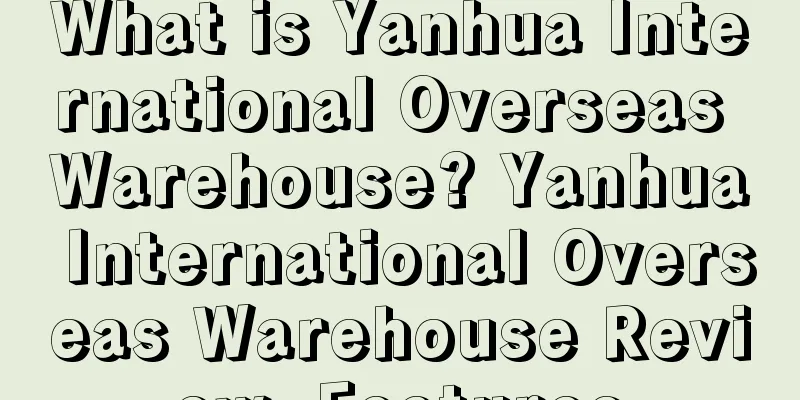What is Review

|
Review (product review) is an evaluation of the product itself. It does not involve logistics or customer service quality. It does not affect the customer's judgment of the product and does not affect the seller's performance. It uses a combination of ratings and text, pictures, and video reviews.
Review Type VP reviews, or Verified Purchase, are reviews left by users who have actually purchased the product. Non-verfied purchase review: writing a review for a product without purchasing it.
Pros and cons of direct reviews Advantages: It can quickly increase the number of reviews and boost sales; Disadvantages: direct reviews can be easily deleted, resulting in the listing being shut down, and in the worst case, the account may be closed.
Direct review regulations 1. If a buyer's product review is judged not to comply with Amazon's review rules (it may contain content such as evaluation or promotion assistance), Amazon may decide to delete (removed) or reject (rejected) the message. Once the message is deleted or rejected, the buyer will not be able to leave a review for the same product again, even if the content of the review is different. 2. Product reviews can contain links to other products sold on Amazon. 3. Buyers living under the same roof can only leave one message for the same product. Multiple messages are not allowed. 4. Each buyer (not reviewer!) can submit five direct reviews per week. The number of direct reviews per week starts from 12:00am UTC on Sunday and ends at 11:59pm UTC on the following Saturday. This rule does not apply to Vine Reviews, electronic/physical books, music and video products. 5. If Amazon finds multiple product reviews on the same product within a short period of time, Amazon may set a limit on the number of direct reviews for the product.
Review Rules 1. Buyers must spend at least $50 via a valid credit or debit card; 2. Prime membership subscriptions and product promotion discounts are not included in the $50; 3. You cannot leave repeated comments for the same delivery address; 4. If the product review given by the buyer is judged not to comply with Amazon's review rules (it may contain content such as evaluation or promotion assistance), Amazon can decide to delete (removed) or reject (rejected) the message. Once the message is deleted or rejected, the buyer will not be able to leave a review for the same product again, even if the content of the review is different. 5. Product reviews can contain links to other products sold on Amazon.
Amazon bans incentivized reviews Amazon prohibits sellers from offering any form of compensation in exchange for reviews, including: 1. Payment (including currency or gift cards); 2. Refunds or compensation, including refunds or compensation provided through non-Amazon payment methods; 3. Free products; 4. Eligibility to participate in a sweepstakes or competition; 5. Offer discounts for future purchases; 6. Other gifts.
Only allow buyers to submit reviews for items that have been posted for sale. The following items are excluded 1. DVD and Blu-ray movies: Reviewers can submit reviews before the movie is released, based on the movie's theatrical run. For music and video games, pre-release reviews are not available. 2. Books: If a book has other versions available, you can submit a review before it is released. For example, if the hardcover version of a book has been released, you can review its pre-release paperback version. 3. Vine pre-release copies: Vine reviewers can review products before they are released. For more information, see About Amazon Vine. If you see a review for an unlisted product that doesn't fit any of the above criteria, please report it using the Report Abuse link next to the review.
Reasons why comments disappeared 1. Violating Amazon review rules: Sellers post reviews pretending to be buyers; Buyers post multiple negative reviews for the same product; Reviews from buyers in exchange for cash; Buyers post reviews to earn rewards; 5-star reviews from the product creator’s family members to help boost sales Product reviews posted by sellers after they were promised a refund or exchange. Negative reviews posted by sellers for competitor products; An artist posts a positive review on a peer's album in exchange for a favorable review. 2. Buyer deletes; 3. After the variant is split, it will follow the original sku.
The development of Amazon reviews In 2012, Amazon established an office in Guangzhou and began to recruit Chinese sellers. The first batch of entrants received orders out of the blue without having to fake orders. From the beginning of 2014 onwards, with the influx of a large number of sellers, competition began to become fierce. Some sellers needed to use some unconventional means to improve their competitiveness, and the vast majority of fake order sellers began to fake orders. In 2016, Amazon regulators ignored the issue because there were not many fake sellers and the impact was not significant. However, as more and more sellers joined the "fake review" army, it directly violated the original intention of the Amazon platform. Therefore, Amazon began to crack down on fake reviews in 2016: In January, Amazon removed the VP mark for reviews of orders with discounts of more than 50%; In March, legal proceedings were initiated against individual reviewers in the United States; In June, Amazon removed the VP mark for reviews of orders with discounts of more than 30%; In July, Amazon launched the cloud inspection rating tool to conduct platform-wide inspections. Based on the number of authenticity reviews, the tool assigns a corresponding grade (AF) to ASINs to combat fake reviews. The grade determines whether to remove fake reviews, products, or store sales permissions. According to statistics, more than 95% of products with fake reviews are rated F. In September, Amazon buyers must use a valid credit or debit card to register an account and purchase at least $50 in order to leave a review (except for Amazon Prime members). However, sellers can still provide free or discounted products in exchange for reviews; In October, Amazon banned sellers from using free or discounted products (including third-party platforms) in exchange for reviews, and sellers can only obtain reviews through Amazon Vine Voice project team. It also clearly stated that if sellers continue to use free or discounted products in exchange for reviews, the Reviewer product will be removed at best, and the store sales privileges will be removed at worst. In November, Amazon began to delete reviews that did not have the VP mark, were not relevant to the product itself, and were not relevant to the purchasing experience. Since January 2017, more review calculation rules have been introduced, and the scale of review deletion has changed from deleting individual reviews to deleting reviews in batches. In February 2017, the first warning was issued to sellers who manipulated reviews in bulk. In June 2017, Amazon launched its early reviewer program. In February 2018, Amazon banned a large number of accounts suspected of false orders, and a large number of sellers’ accounts were closed. |
Recommend
What is C&A? C&A Review, Features
C&A is a global fashion retailer and a famous...
Amazon has fallen out of favor in Australia, with only 20% choosing it as their first choice
Recently, an organization conducted a survey of n...
What is Bonobos? Bonobos Review, Features
Founded in 2007 and headquartered in New York, Bo...
What is A+ Plan? A+ Plan Review, Features
AliExpress's "A+ Plan" is a promoti...
What is Pixiu Rabbit ERP? Pixiu Rabbit ERP Review, Features
Pixiutuerp serves the e-commerce industry and prov...
What is Snowe? Snowe Review, Features
Snowe is a unique home furnishings brand that pro...
Revenue and net profit plummeted! Many cross-border sellers were hit
Recently, major cross-border sellers have success...
What is B2C? B2C Review, Features
B2C (Business-to-Customer) is abbreviated as "...
What is 1688 Cross-border Special? 1688 Cross-border Special Review, Features
1688 Cross-border Exclusive Supply is a cross-bord...
46% of retailers added Halloween collections this year
New research commissioned by Perfetti Van Melle, ...
What is palletjackwms? palletjackwms Review, Features
PalletJackWMS is a warehouse management system bui...
What is ECMS Express? ECMS Express Review, Features
ECMS Express is a technology-enabled international...
With a revenue of 250 million in 3 years, the shapewear brand Shapermint is on fire!
Recently, Shapermint, a three-year-old body-shapi...
Summary of hot-selling products in Southeast Asia in 2021, electronic products become popular!
2021 is about to pass. In this year shrouded by t...
Seller satisfaction ranks second! Bonanza, a niche American e-commerce company, is also very popular
Today, e-commerce is developing rapidly and compe...









